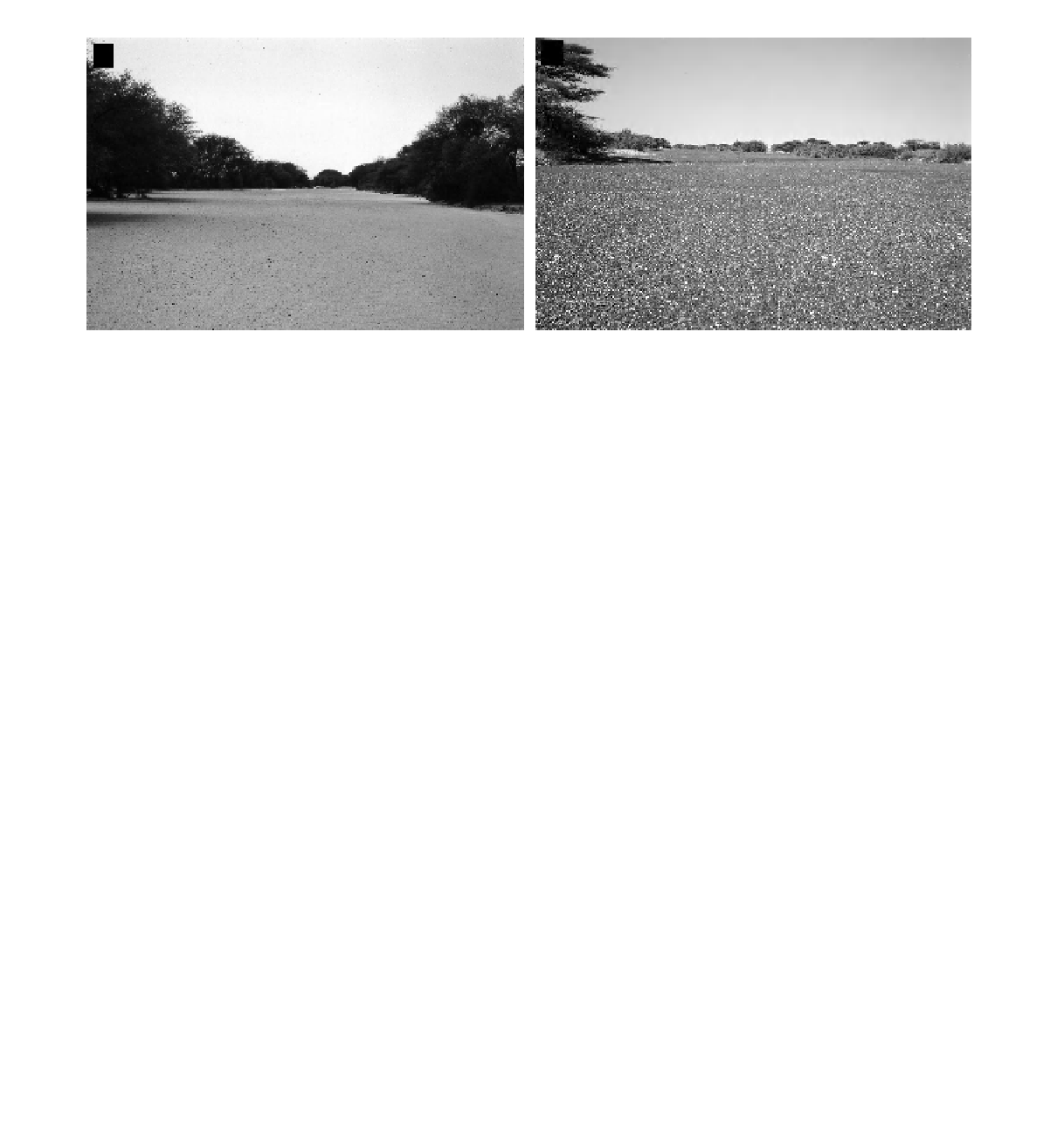Geoscience Reference
In-Depth Information
(a)
(b)
Figure 13.11
(a) Sand-bed ephemeral stream showing great width and planar bed, Laga Tulu Bor, northern Kenya. (b) Gravel-bed
ephemeral showing great width and planar bed, unnamed stream, Sibilot National Park, northern Kenya.
13.3
Ephemeral river channel geometry
that the finite size of convective rain cells imposes an
upper limit on the discharge of an ephemeral drainage
system regardless of its size. In other words, there would
be no need for any further increase in channel capacity
once the runoff of one rain cell is catered for. This is
clearly an area where there is a need for greater infor-
mation about cellular rainfall and both flows and channel
geometry.
Superimposed on regional trends, Schumm (1961) pro-
vides us with an insight into the variability of channel
width at a more local scale by examining a surrogate
measure of bed and bank material shear strength. He
shows that the lower the silt-clay content of the wettable
perimeter, the higher the ratio between bankfull width
and depth (Figure 13.13). Working in another part of
arid North America, Murphey, Lane and Diskin (1972)
have also noted downstream changes in channel width
that are related to the nature of local bank materials. In
their case, sandstones are more erodible than conglomer-
ates, thus producing a less well-defined and less confined
channel.
However, some reservations may be needed in assessing
the geometry of the arroyos of the southwestern United
States, if only because land-use changes and changes in
storm size and frequency during the late nineteenth cen-
tury are thought to have been responsible for subsequent
channel incision and consequent confinement of the flow
(Cooke and Reeves, 1976; Reid, 2009).
13.3.1
Channel width
Desert streams are notable for their great width (Leopold,
Emmett and Myrick, 1966; Baker, 1977; Frostick and
Reid, 1979; Graf, 1983) (Figure 13.11). When visiting a
desert for the first time, those whose familiarity is rather
with perennial streams of humid regions might think that
the ephemeral channels they come across represent much
larger basins than is the case. Wolman and Gerson's (1978)
compilation of data for different arid and semi-arid regions
confirms this rapid increase in width with drainage area, at
least for small- to moderate-sized basins. However, their
diagram also reveals a fascinating and fairly universal
asymptote value of between 100 and 200 m for channel
width once the drainage basin exceeds about 50 km
2
.
(This value is only achieved in perennial rivers when the
drainage basin is about 10 000 km
2
in size!)
The large rate of increase of stream width in small-
to moderate-sized basins might be attributable, in part,
to the high drainage densities that are sustained by rapid
runoff in drylands. For example, Frostick, Reid and Lay-
man (1983) report densities of 90 km/km
2
for a catch-
ment in northern Kenya. The change to a fairly steady
stream width once the water catchment exceeds c. 50
km
2
might result, in part, from the fact that transmis-
sion losses from flows with such a high wetted perimeter
compensate for any addition of tributary water. Indeed,
in a situation where there are no significant tributary in-
puts, Dunkerley (1992) (Figure 13.12) shows that severe
transmission losses produce a commensurate decline in
channel width and capacity over distances as small as
13.3.2
Channel bed morphology

